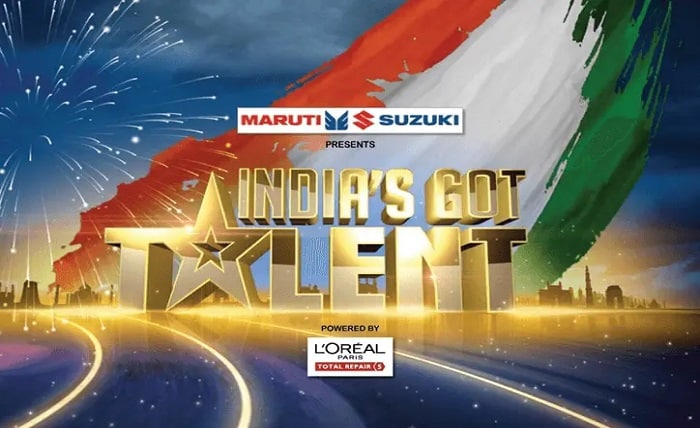India’s Got Latent: Unveiling the Phenomenon of India’s Stand-Up Comedy Revolution

In the realm of Indian entertainment, India’s Got Latent emerged as a groundbreaking platform that redefined the landscape of stand-up comedy. Hosted by the charismatic Samay Raina, the show brought together a diverse array of comedic talents from across the nation. Launched on June 14, 2024, on YouTube, it quickly garnered a massive following, resonating with viewers through its unique format and unfiltered humor.
The Genesis of India’s Got Latent
Inspired by international formats like “Kill Tony” and the “Got Talent” series, Samay Raina envisioned a platform that would provide comedians with an opportunity to showcase their talents in an unscripted and spontaneous environment. This vision materialized into India’s Got Latent, a show that celebrated the art of stand-up comedy while embracing the diversity and richness of Indian culture. citeturn0search12
Format and Structure: A Blend of Spontaneity and Talent
The format of India’s Got Latent was designed to keep both performers and audiences engaged:
- Open Mic Segment: Comedians performed unprepared sets, often leading to spontaneous and raw humor.
- Guest Judge Interaction: Each episode featured guest judges who provided feedback, asked impromptu questions, and engaged in playful banter with the performers.
- Audience Participation: Viewers had the opportunity to suggest topics or scenarios, influencing the direction of performances and adding an interactive element to the show.
This structure ensured that India’s Got Latent remained unpredictable, engaging, and deeply connected to its audience.
Celebrating Diversity: Comedians Who Shaped the Show
One of the standout features of India’s Got Latent was its celebration of India’s rich cultural tapestry. The show spotlighted comedians from diverse backgrounds, each bringing a unique perspective:
- Naman Arora: Known for his observational humor and relatable anecdotes, Naman quickly became a fan favorite.
- Keshav Jha: Hailing from Bihar, Keshav’s performances blended regional dialects with sharp wit, offering a fresh comedic perspective.
- Deepak Yadav (DDSRY): With his unconventional style and fearless humor, Deepak left an indelible mark on the audience.
- Sharon Verma: Sharon’s storytelling prowess and candid approach to everyday situations resonated with many viewers.
- Santosh Patra: His performances, often drawing from personal experiences, added depth and authenticity to the show.
These comedians, among others, showcased the vastness of Indian humor, making the show a microcosm of the nation’s diversity.
The Unique Winner Mechanism: Self-Rating and Audience Engagement
Departing from traditional talent show formats, India’s Got Latent introduced an innovative winner mechanism:
- Self-Rating: Before each performance, comedians rated their own acts. Post-performance, judges provided their ratings. If the average judge rating matched the comedian’s self-rating, they won the episode.
- Audience Voting: Viewers could vote for their favorite performances, influencing the overall ratings and adding a democratic element to the show’s outcome.
This mechanism not only empowered performers but also fostered a deeper connection with the audience, making them an integral part of the show’s narrative.
Behind the Scenes: The Team and Production
The success of India’s Got Latent was a collective effort:
- Host: Samay Raina’s infectious energy and genuine interactions set the tone for the show.
- Production Team: Led by Pratham Sagar, the team ensured seamless execution, balancing the spontaneity of performances with structured production values.
- Judges and Guests: A rotating panel of judges, including industry veterans and emerging talents, kept the content fresh and engaging.
The collaborative spirit behind the scenes translated into authentic and relatable content on screen, contributing significantly to the show’s popularity.
The Rise in Popularity: Memes, Merchandise, and Cultural Impact
India’s Got Latent transcended traditional viewership metrics:
- Memes and Social Media Buzz: Hilarious moments from the show became viral memes, sparking discussions and debates across platforms.
- Merchandise Launch: Capitalizing on its popularity, the show introduced merchandise, allowing fans to own a piece of the Latent experience.
- Cultural References: Phrases and jokes from the show permeated everyday conversations, indicating its deep cultural impact.
The show’s ability to blend humor with relatability made it a touchstone for contemporary Indian comedy.
The Controversies: Navigating the Fine Line Between Humor and Offense
With great popularity came scrutiny. Several incidents during the show’s run ignited debates:
- Rakhi Sawant vs. Maheep Singh: A heated argument between judge Rakhi Sawant and comedian Maheep Singh led to a chair being thrown on stage. The incident sparked discussions about professionalism and decorum in entertainment.
- Derogatory Remarks: Certain performances included jokes about disabilities and sensitive topics, leading to public outrage and legal notices. The fine line between edgy humor and insensitivity became a focal point of national discourse.
- Ranveer Allahbadia’s Controversial Question: In a bonus episode, guest judge Ranveer Allahbadia posed a provocative question to a contestant, leading to widespread backlash and legal ramifications. The incident prompted discussions about boundaries in comedic content and the responsibilities of content creators.
These controversies highlighted the challenges of balancing humor with societal sensitivities, prompting introspection within the entertainment industry.
Conclusion
India’s Got Latent may have concluded its run, but its impact endures:
- Platform for New Talent: The show unearthed comedians who have since embarked on successful careers, enriching India’s comedy scene.
- Cultural Conversations: By addressing diverse topics, the show sparked conversations about societal norms, taboos, and the evolving landscape of humor.
- Evolving Comedy Landscape: The blend of traditional stand-up with modern formats influenced subsequent comedy shows, pushing boundaries while acknowledging societal sensitivities.
In retrospect, India’s Got Latent was more than just a comedy show; it was a reflection of India’s dynamic culture, a testament to its evolving entertainment industry, and a catalyst for conversations that continue to shape the comedic narrative of the nation.
FAQs
1. What is “India’s Got Latent”?
“India’s Got Latent” is a conceptual or potential platform that focuses on discovering and highlighting the hidden or untapped talent across India. Unlike mainstream talent shows, it aims to bring forward stories and skills that often go unnoticed.
2. How is “India’s Got Latent” different from “India’s Got Talent”?
While “India’s Got Talent” is a televised entertainment show showcasing a wide variety of performances, “India’s Got Latent” emphasizes the unseen, unsung, and undiscovered potential—from rural innovators to street performers, and from unknown artists to everyday heroes.
3. Who can participate in “India’s Got Latent”?
Anyone with a unique skill, invention, creative idea, or untold story can be a part of “India’s Got Latent”—regardless of age, background, or formal training. The focus is more on potential and originality than polished performance.
4. How can I nominate someone for “India’s Got Latent”?
Nominations can typically be submitted through an online portal or by tagging the platform on social media with a short video or description of the individual’s latent talent. (Note: Actual details would depend on whether this is a running campaign, so confirmation from official sources would be needed.)
5. Why is recognizing latent talent important in India?
India is home to diverse, untapped talent, especially in rural or underrepresented communities. Platforms like “India’s Got Latent” help bridge the gap by providing visibility, support, and opportunities to people who might otherwise never be discovered.




